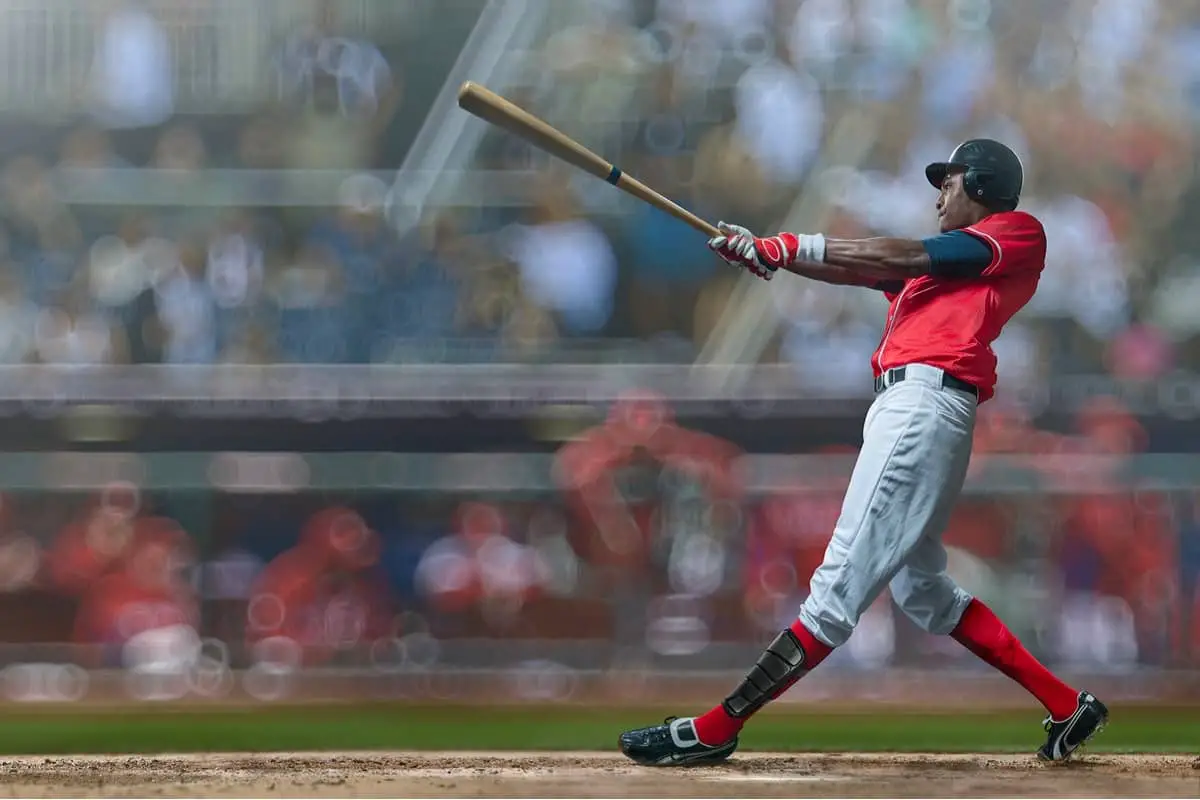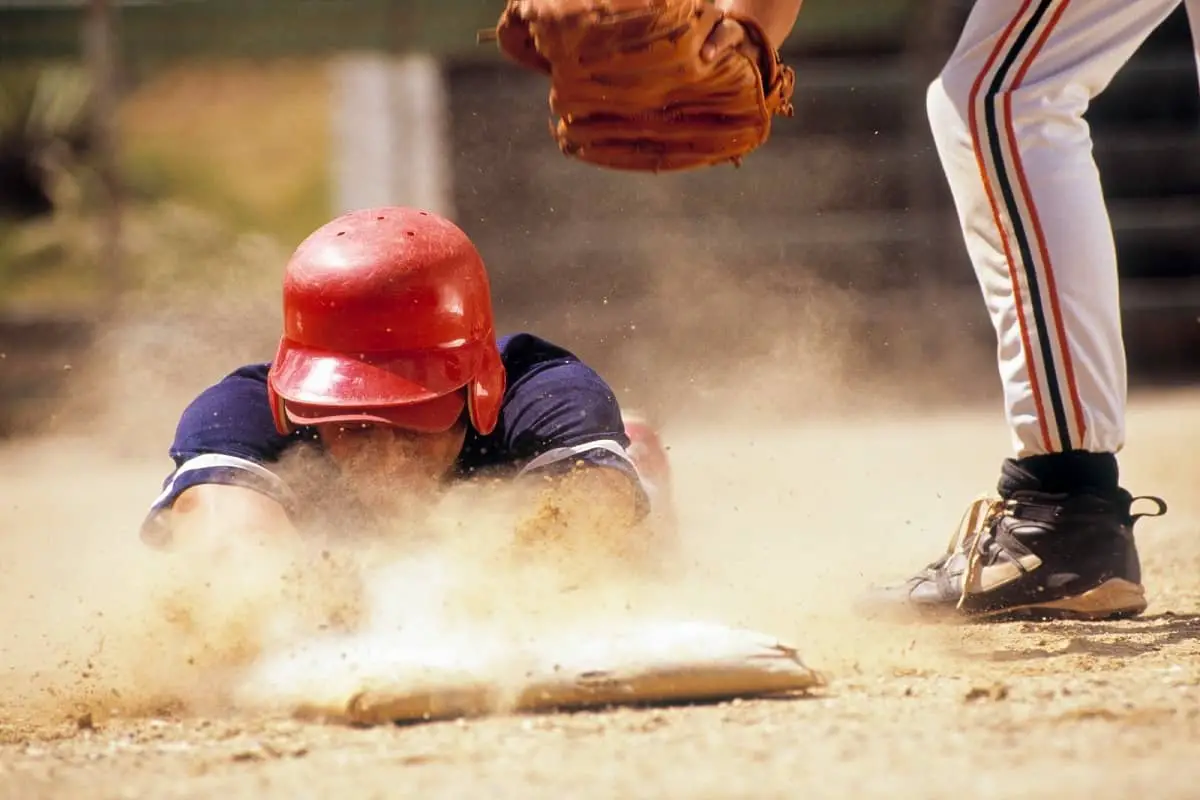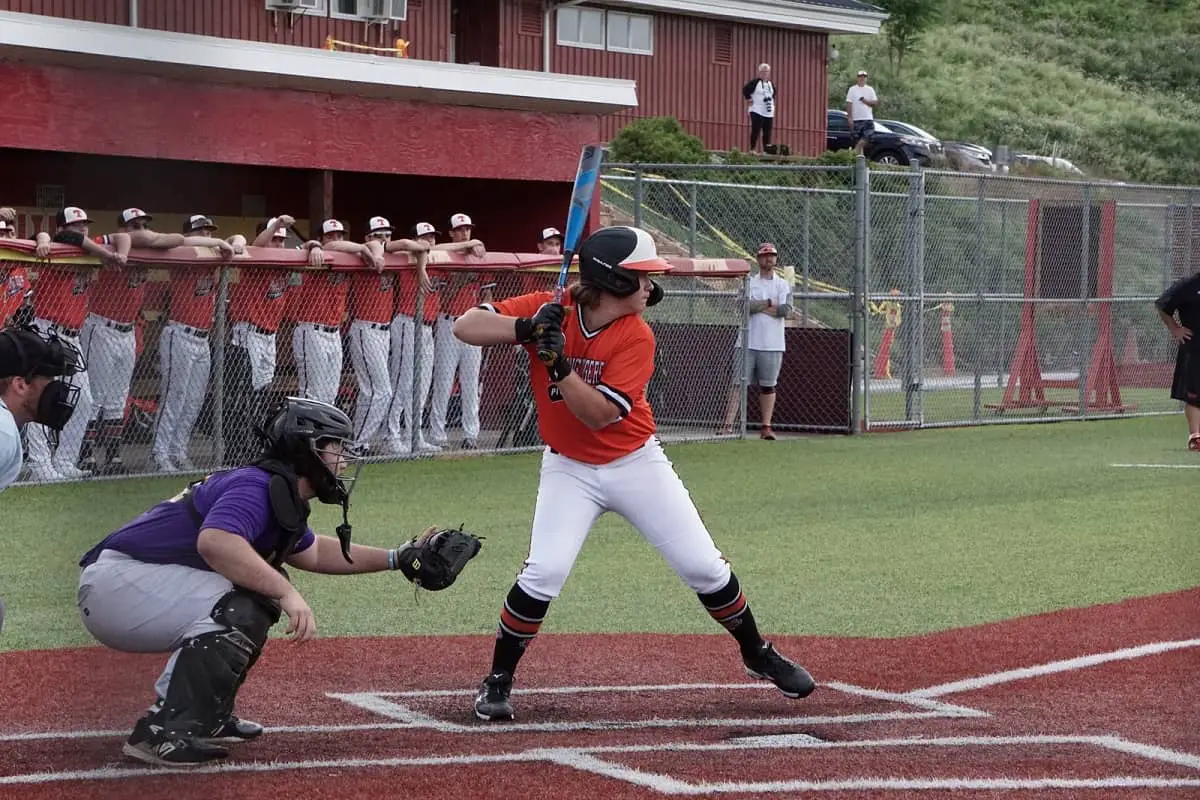When Did Baseball Players Start Wearing Helmets?
Baseball players began experimenting with helmets as early as 1905, but it would take decades of testing homemade makeshift helmets, and numerous injuries to players before Major League Baseball would finally introduce a rule mandating the wearing of batter helmets.
Let’s take a journey through baseball helmet history and see if we can pin down when did baseball players start wearing helmets, officially and unofficially.
Hang on to your baseball caps!
KEY TAKEAWAYS
* The first baseball helmet patent was issued in 1905.
* Helmets became mandatory in the MLB in 1971.
* A rule change in 1983 required new players to wear helmets with an ear flap.
* By 2005, eveyone on the field was required to wear protective headgear.

Disclosure: As an Avantlink and Amazon Associate, we earn from qualifying purchases. Disclosure Statement.
Page Content
When Did Baseball Players Start Wearing Helmets?
Baseball players started wearing helmets in the early 1900s, but it wasn’t until 1971 that MLB (Major League Baseball) made the wearing of helmets mandatory. However, they changed the requirement in 1983 to require all new players to wear helmets with at least one ear flap.
All major youth baseball and softball leagues started enforcing the mandate in 1985, although many had already subscribed to requiring players to wear baseball helmets. By 2005, all those on the field, including ball boys and girls as well as coaches, had to wear protective headgear while on the field.
When Did They Start Wearing Helmets In Baseball?
It took a little more than 50 years from the first official baseball game in 1846 for players to start looking for ways to protect their heads. The first patent for a baseball helmet was issued in 1905. However, it wasn’t stylish or comfortable as it was basically an inflatable wrapped around the head.
Other helmet forms came in 1908 as baseball players were injured by off-the-mark pitches. These helmets were more akin to glorified earmuffs than true protective gear. Still, the gear protected the ears and temple.
Baseball officials remained concerned about the batter’s health as others sustained severe injuries and were even killed by baseballs hitting them in the head. Some pitchers intentionally hit star batters as a technique to eliminate them from the game.
Many batters created their own head protection as no-one was manufacturing batting helmets and the MLB didn’t have any set standards in place for protective headgear.
This content was originally published on headsdontbounce.com. If it appears on another website, it is a violation of the copyright owned by headsdontbounce.com.
Hall of Fame catcher Roger Bresnahan also created a protection device for the back of the head, complete with fake hair, but there isn’t any documentation it was ever used.
Frank Chance, first baseman for the Chicago Cubs, wore makeshift headgear in 1913 but most said it was basically a bandage wrapped around a sponge.
By the late 1930s, teams like the Cleveland Indians and Philadelphia Athletics became interested in pursuing the idea of helmets for all on the field. They tested various forms from leather to polo helmets, but many ideas weren’t tried more than once.
The idea of truly protective helmets was thrown around more in 1940 in a meeting of National League officials in Chicago. A prototype was made and promoted and Jackie Hayes wore one during a game that year, even though the concept wasn’t adopted by the league.

When Did MLB Start Wearing Helmets
Helmets started becoming more standard in the MLB by the 1960s, although they had yet to be mandated. Earl Battey, a catcher, was badly injured in a 1961 summer game. He came back with an earflap to protect his injury, although he hated it.
Earflap modifications continued with some like Tony Gonzalez of the Phillies getting a helmet made especially for him as he was one of the batters hit most by pitches. This led the way for MLB to adopt a new style of helmet with a pre-molded earflap.
The problem, according to baseball players in the 1960s and 1970s, was that the earflap and the brim limited visibility.
Some baseball players like Brooks Robinson modified their helmets by cutting the brim with a hacksaw. Robert Crow, a plastic surgeon from Atlanta developed the “c-flap” in the 1970s to provide added protection to the cheek. It took decades for the idea to become mainstream but players often tried to makeshift their helmets in similar ways to get the extra protection.
Mandates to wear helmets were implemented over the decades and MLB made another major move in 2013 when the organization agreed to a new collective bargaining agreement to require players to wear the new Rawlings S100 Pro Comp batting helmet. This new helmet was supposed to withstand being hit by a ball traveling at 100-mile-per-hour.
Those playing in all school and amateur leagues up through Minor League Baseball must wear a double earflap helmet. MLB players are required to wear one with only one earflap.

Choosing the Right Helmet
Batting helmets should first and foremost feel comfortable or it will be hard to get players to wear them. It should also be a quality-made helmet meeting all standards of the National Operating Committee on Standards for Athletic Equipment (NOCSAE) and certified by the Safety Equipment Institute (SEI).
Any helmet being considered should have a hard shell and a soft lining to lessen the impact and keep sweat away from the body. Plenty of ventilation ports are also a necessity.
SUGGESTED: Best Baseball Catchers Helmets
Experts say the money should focus on the helmet over all other gear because a good baseball helmet is the one thing that can protect the player on the field.
Conclusion
Baseball players have known for almost 120 years that protective headgear was needed to play baseball safely. Time has proven that numerous players were injured and even killed facing a fast pitch. Today’s helmets are safer and more comfortable than ever so players can enjoy their time at bat without worrying about their safety.
I hope we have covered the subject of ‘when did baseball players start wearing helmets’ to your satisfaction. If you enjoyed this article, take a look at the related reads below for some more interesting reads!
Related Reads:
